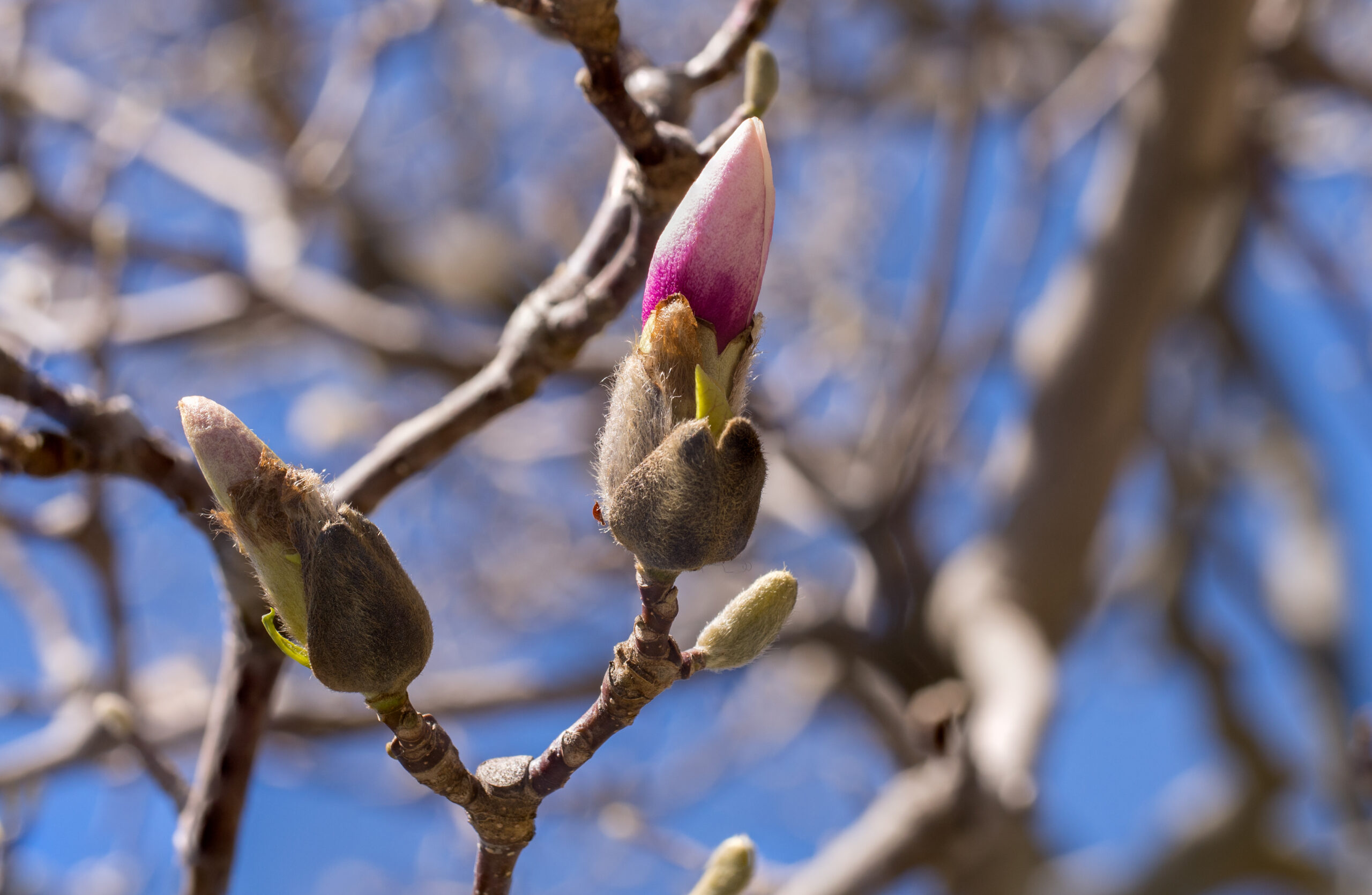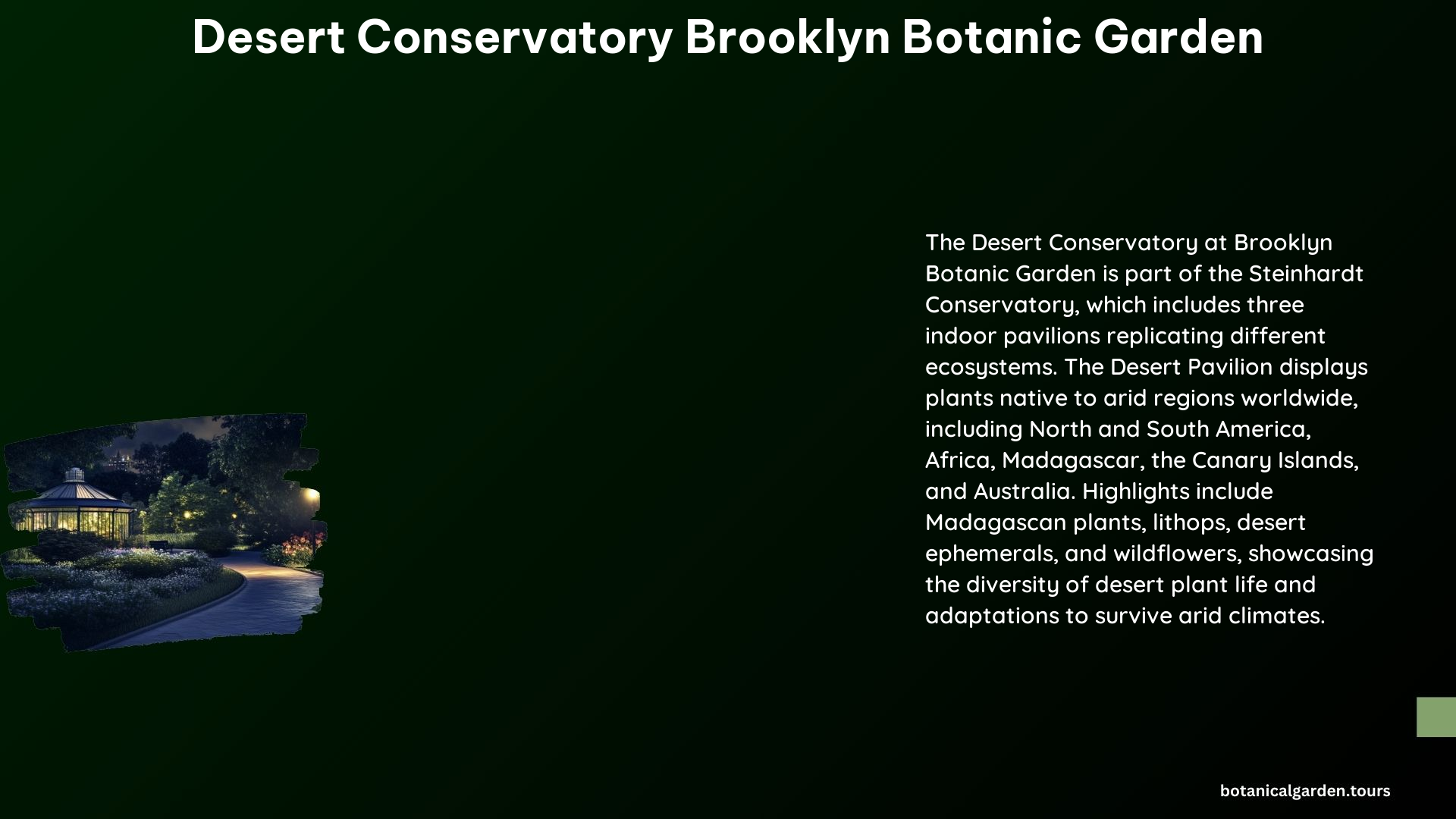The Desert Conservatory at Brooklyn Botanic Garden is a captivating and unique feature that transports visitors to the heart of arid landscapes from around the world. This remarkable greenhouse showcases a diverse collection of cacti, succulents, and other drought-adapted plants, offering a fascinating glimpse into the remarkable adaptations that allow these species to thrive in the most challenging environments.
Exploring the Diverse Plant Collection

The Desert Pavilion at Brooklyn Botanic Garden boasts an impressive array of plant species from various arid regions, including:
Madagascan Plants
The conservatory features a stunning collection of plants native to the island of Madagascar, a biodiversity hotspot known for its unique and endemic flora. Visitors can marvel at the intricate shapes and vibrant colors of these resilient species, which have evolved to survive the harsh conditions of their native habitats.
Lithops
Also known as “living stones,” Lithops are a genus of small, succulent plants that resemble pebbles or stones. These fascinating plants have adapted to blend seamlessly into their desert environments, making them a highlight of the Desert Pavilion’s collection.
Desert Ephemerals
The conservatory showcases a variety of desert ephemerals, which are plants that complete their entire life cycle in a matter of weeks or months, taking advantage of brief periods of rainfall to bloom and set seed. These resilient species offer a glimpse into the remarkable adaptations that allow plants to thrive in the most arid conditions.
Wildflowers
Visitors can also discover a vibrant array of desert wildflowers, adding splashes of color and beauty to the conservatory’s arid landscape. These delicate blooms have evolved unique strategies to conserve water and survive the harsh conditions of their native habitats.
Adaptations for Survival

The plants featured in the Desert Pavilion have developed a range of remarkable adaptations to thrive in arid environments. These include:
| Adaptation | Description |
|---|---|
| Deep Roots | Many desert plants have extensive root systems that can reach deep into the soil to access scarce water resources. |
| Waxy Coatings | Succulent plants often have a waxy or hairy coating on their leaves and stems, which helps to reduce water loss through transpiration. |
| Stem Succulence | Some plants store water in their stems, allowing them to survive extended dry periods. |
| Drought Tolerance | Many desert plants can enter a state of dormancy or reduced growth during dry seasons, conserving resources until conditions improve. |
Events and Programs
Brooklyn Botanic Garden offers a variety of events and programs focused on the Desert Pavilion and its unique plant collections. These include:
- Guided Tours: Visitors can join knowledgeable guides for in-depth explorations of the Desert Pavilion, learning about the diverse plant species and their remarkable adaptations.
- Educational Programs: The garden hosts educational programs and workshops that delve into the ecology of desert ecosystems and the importance of plant conservation.
- Special Exhibits: Throughout the year, the Desert Pavilion may feature special exhibits highlighting specific plant groups, such as cacti and succulents, or showcasing the unique features of desert plants.
Visiting the Desert Conservatory
The Desert Pavilion is located within the Steinhardt Conservatory, which is part of the larger Brooklyn Botanic Garden. Here are some key details for planning your visit:
- Cost: Admission to Brooklyn Botanic Garden is $18 for adults, $12 for seniors and students, and free for children under 12.
- Timings: The garden is open from 8 am to 6 pm, with extended hours during the summer.
- Hours: The conservatory is open from 8 am to 6 pm, with extended hours during the summer.
Whether you’re a plant enthusiast, a nature lover, or simply seeking a unique and captivating experience, the Desert Conservatory at Brooklyn Botanic Garden is a must-visit destination. Prepare to be transported to the heart of arid landscapes and discover the remarkable adaptations that allow these resilient plants to thrive in the most challenging environments.
References:
- https://en.wikipedia.org/wiki/Brooklyn_Botanic_Garden
- https://www.bbg.org/collections/gardens/desert_pavilion
- https://www.cntraveler.com/activities/brooklyn/brooklyn/brooklyn-botanic-garden
- https://www.bbg.org/collections/gardens
- https://www.bbg.org/visit/winter_highlights
